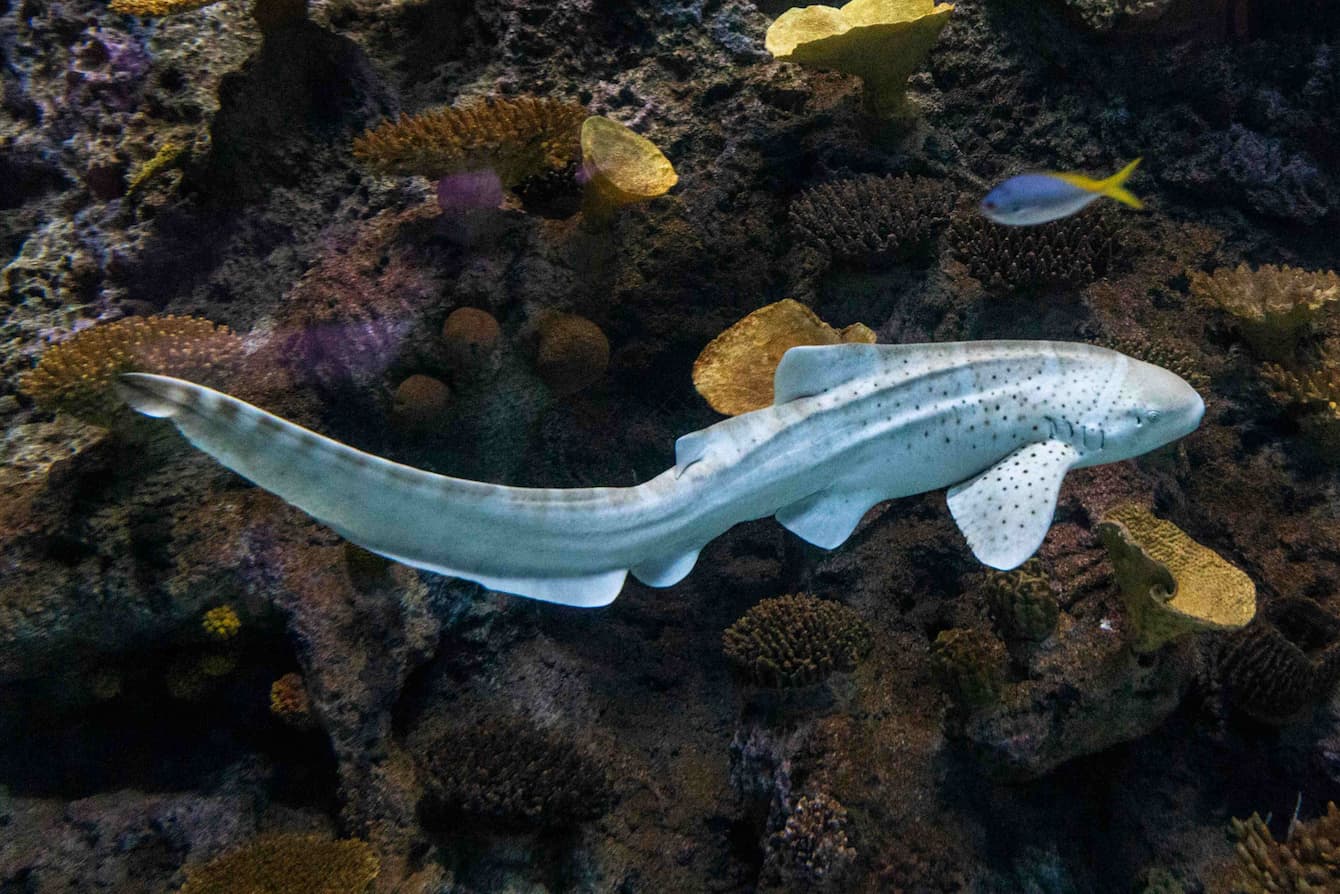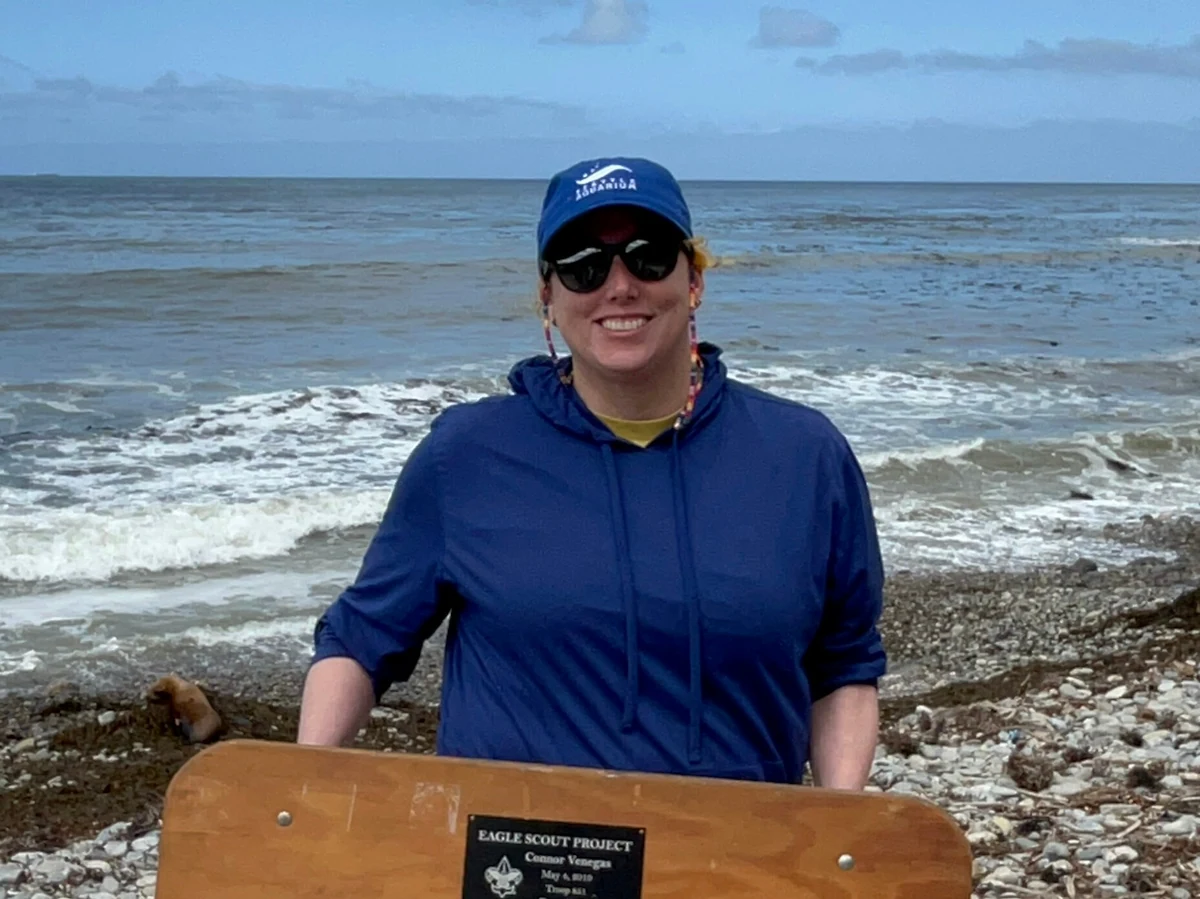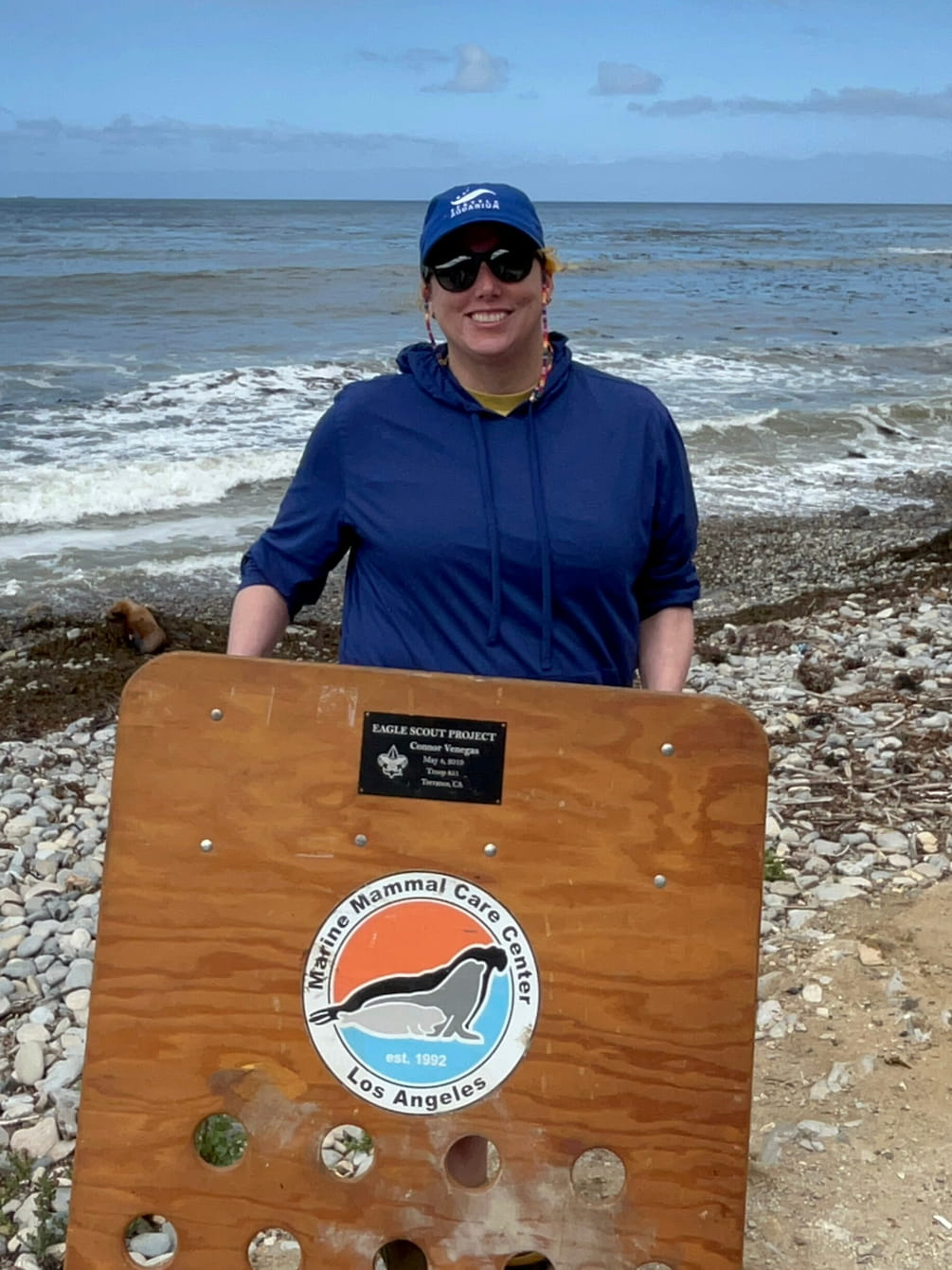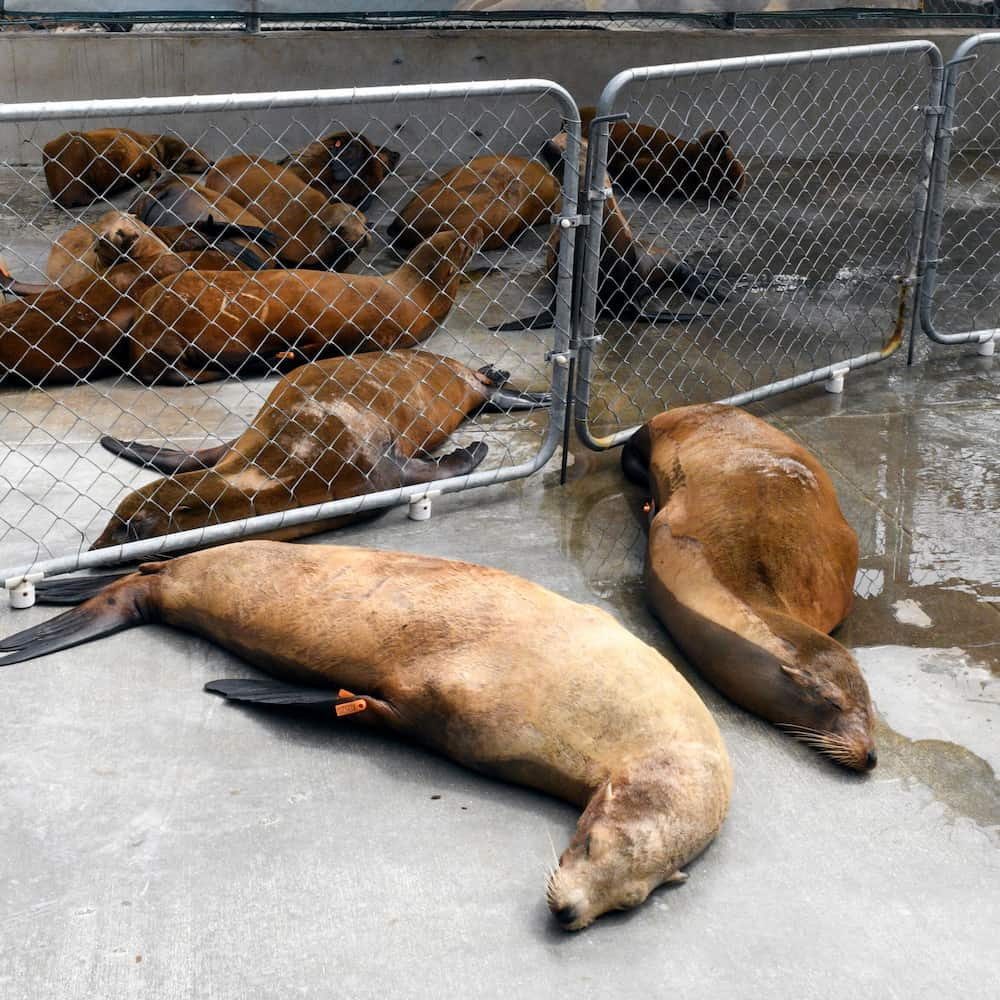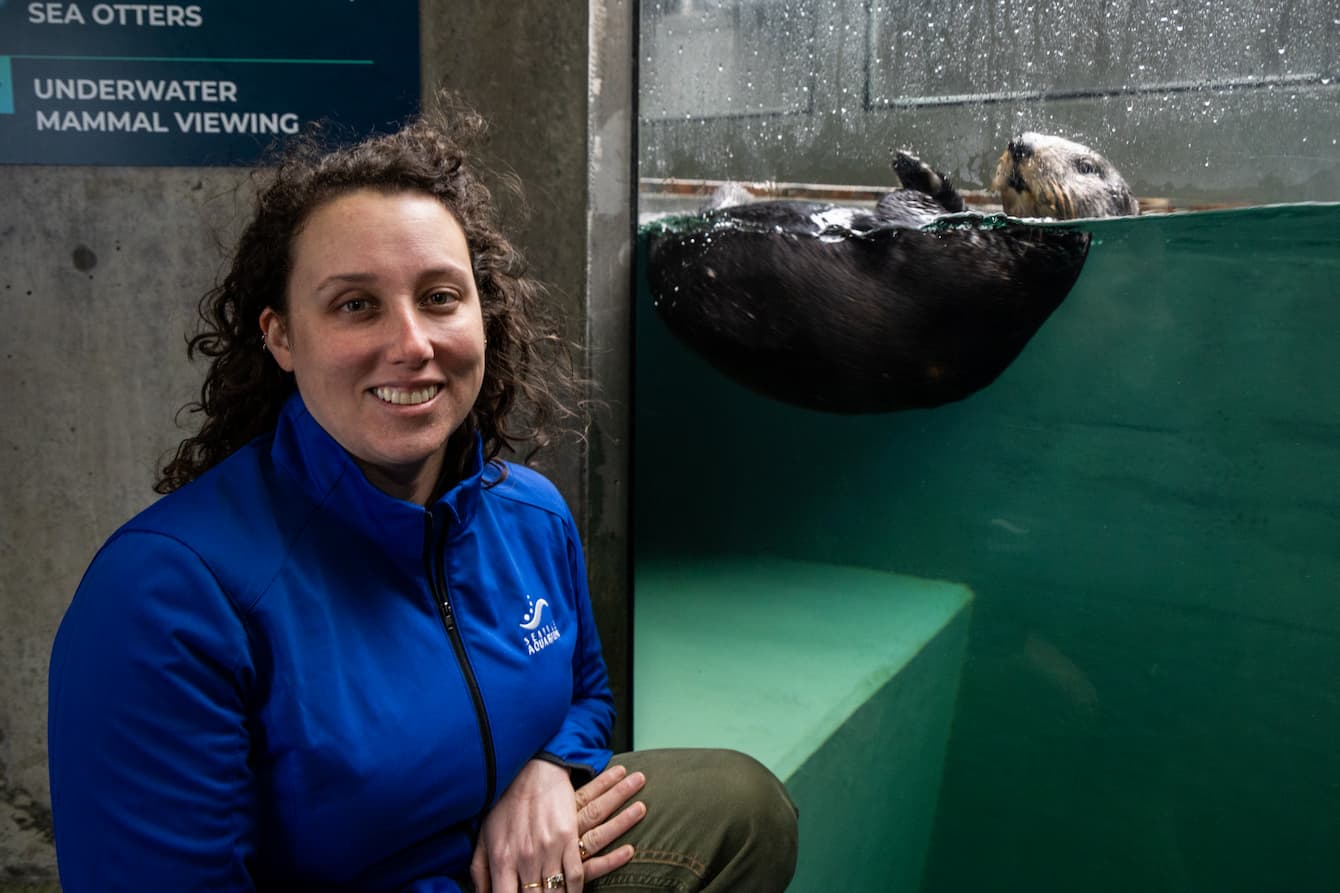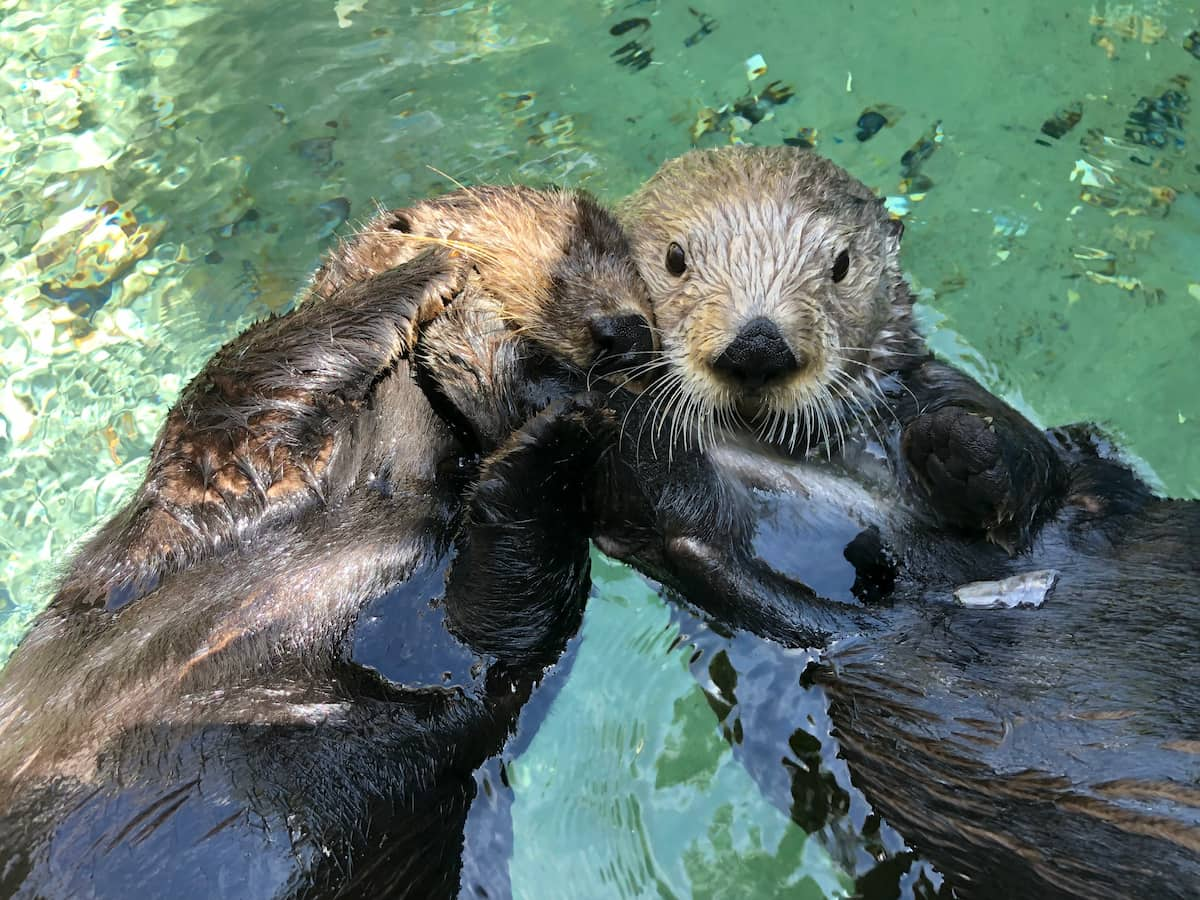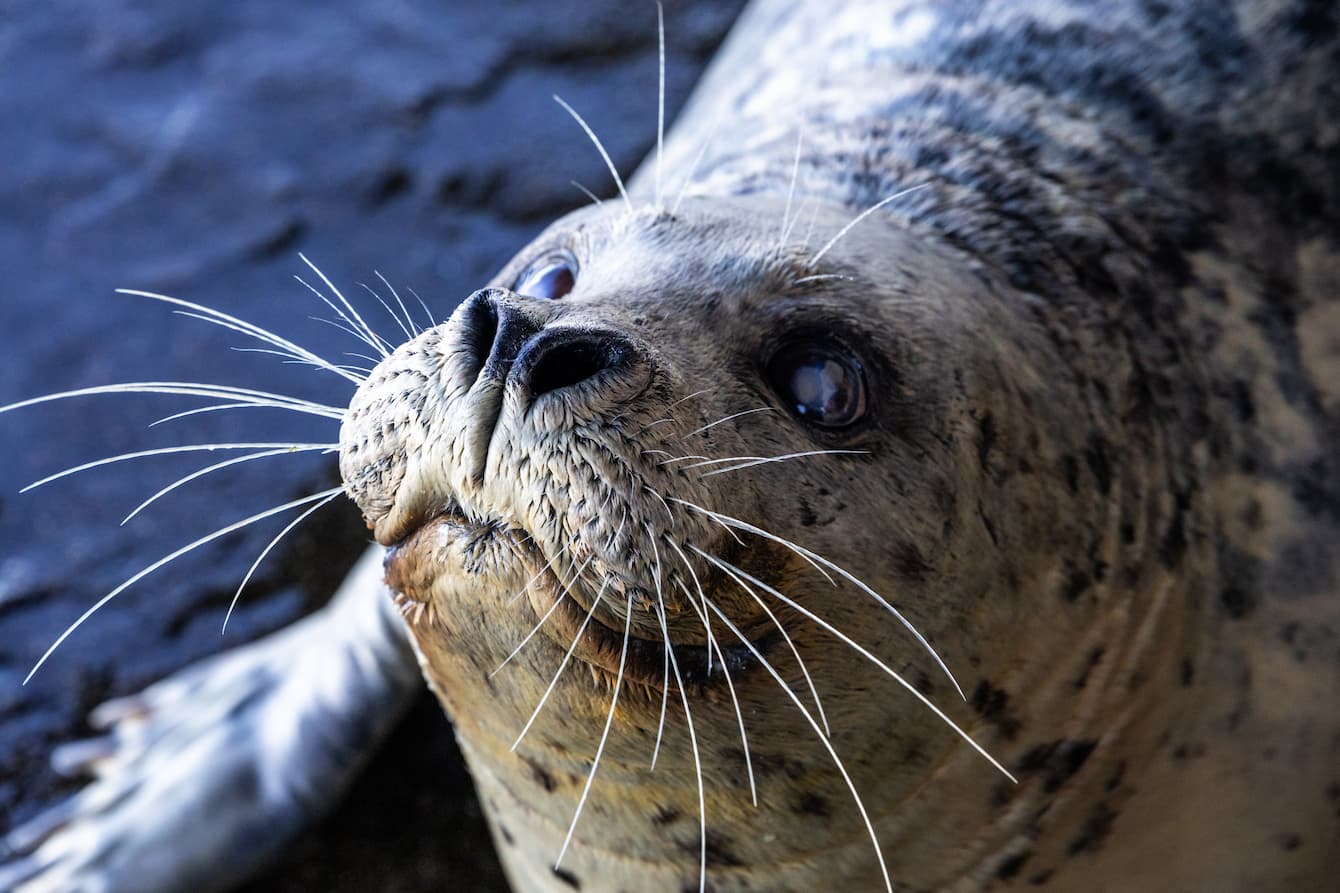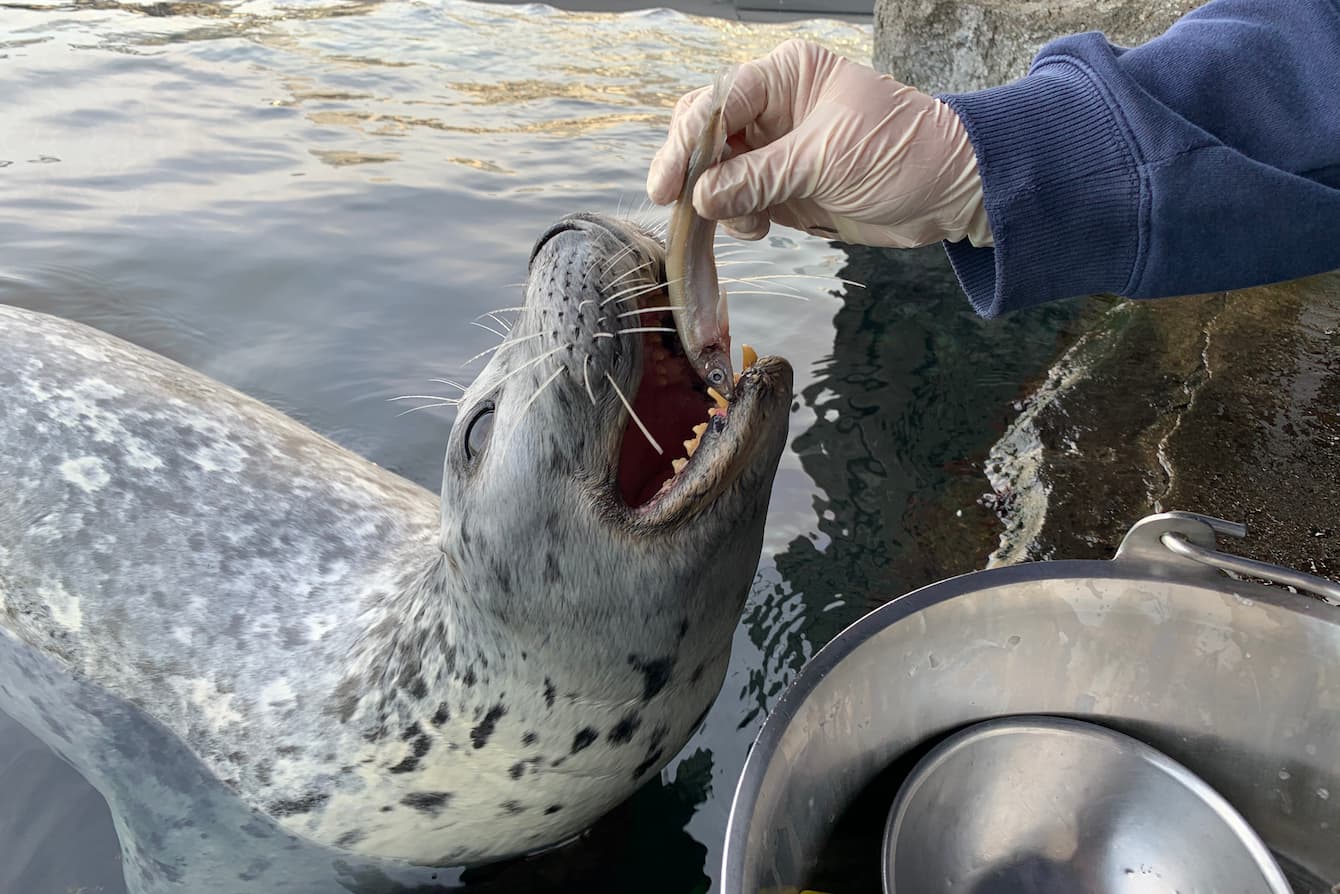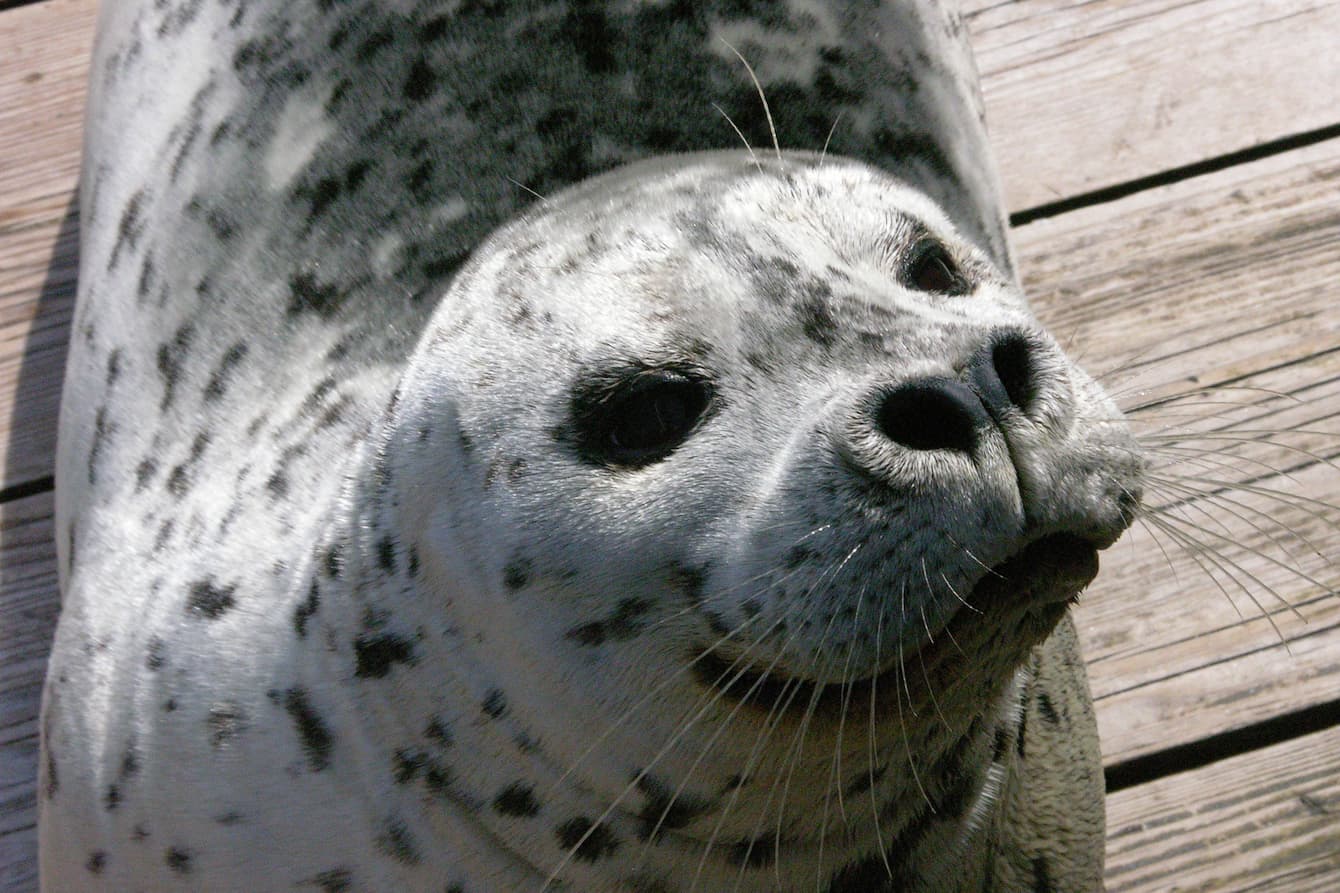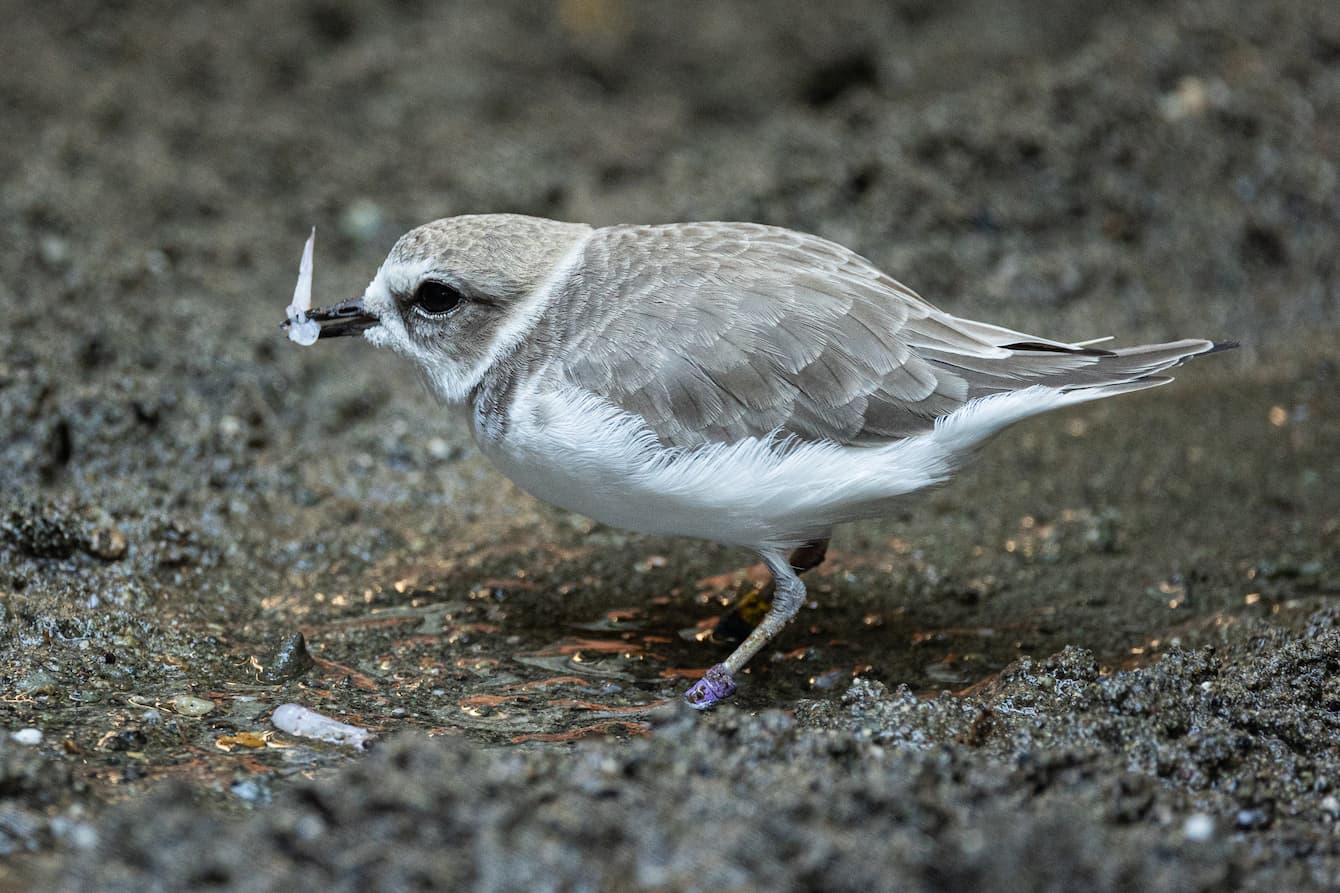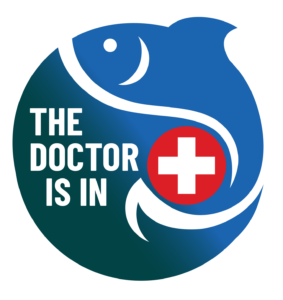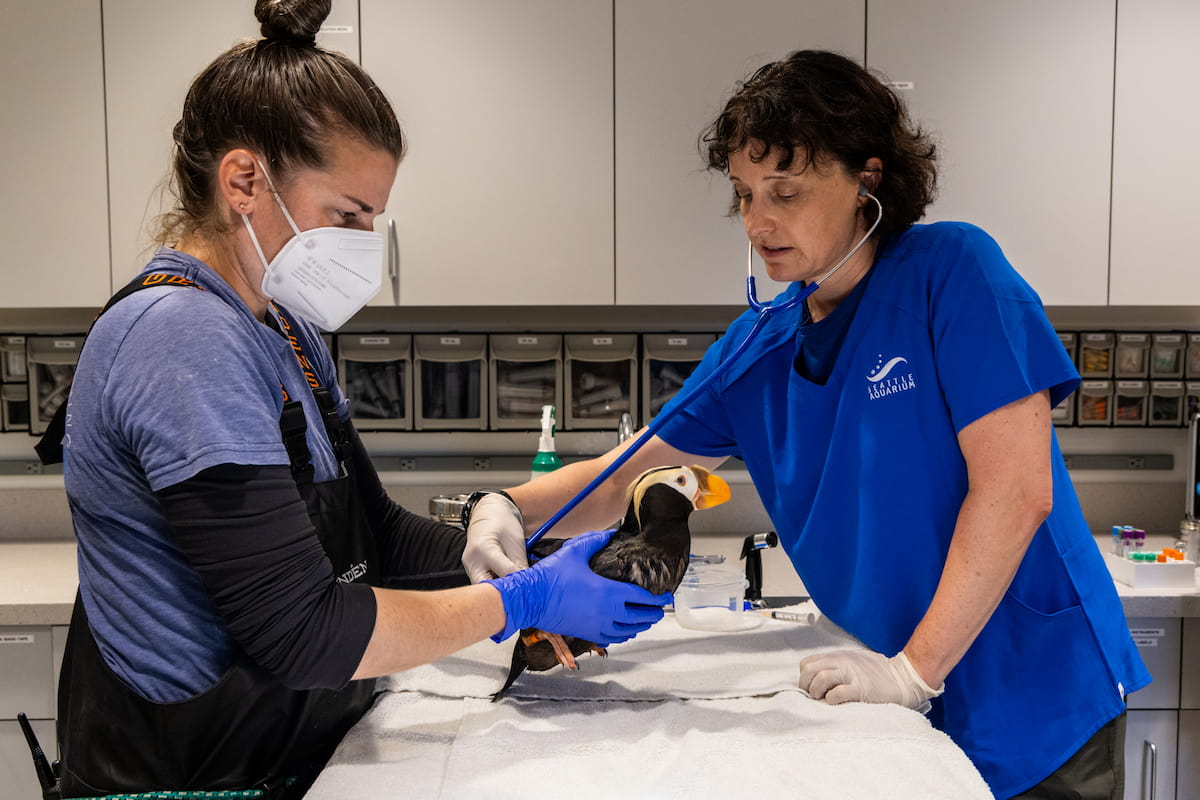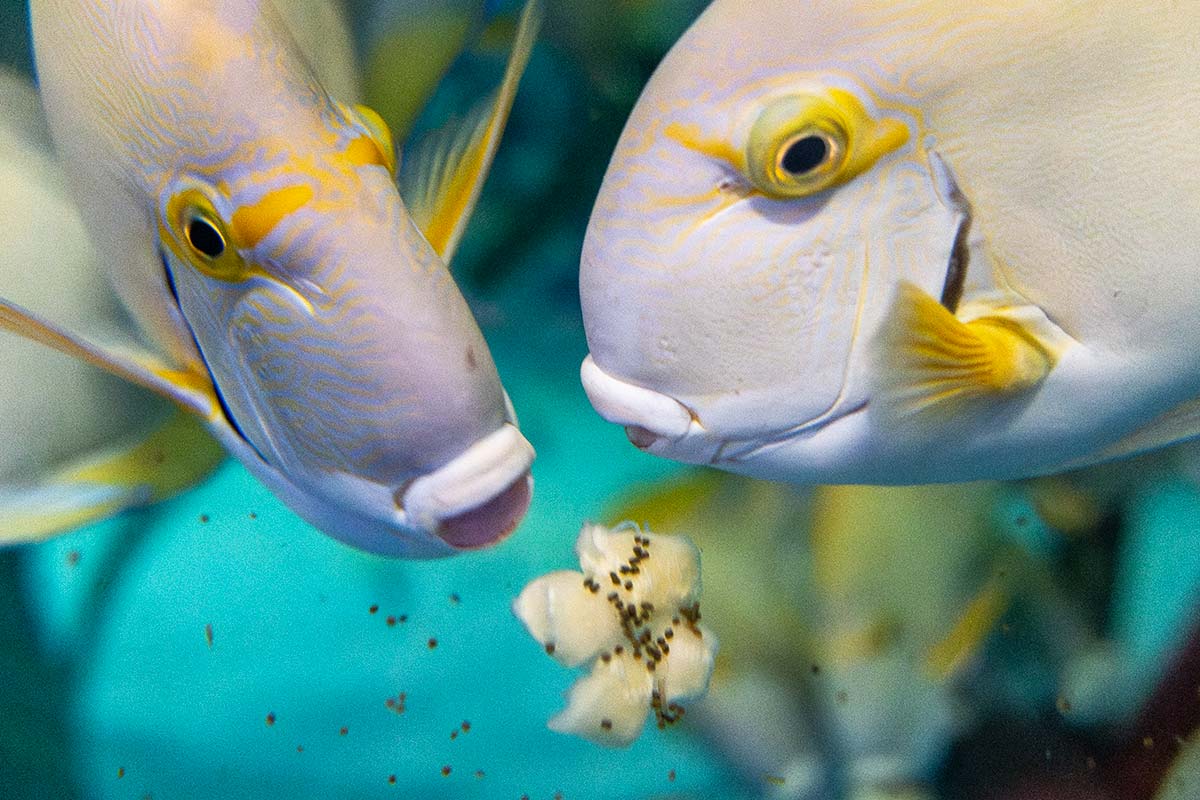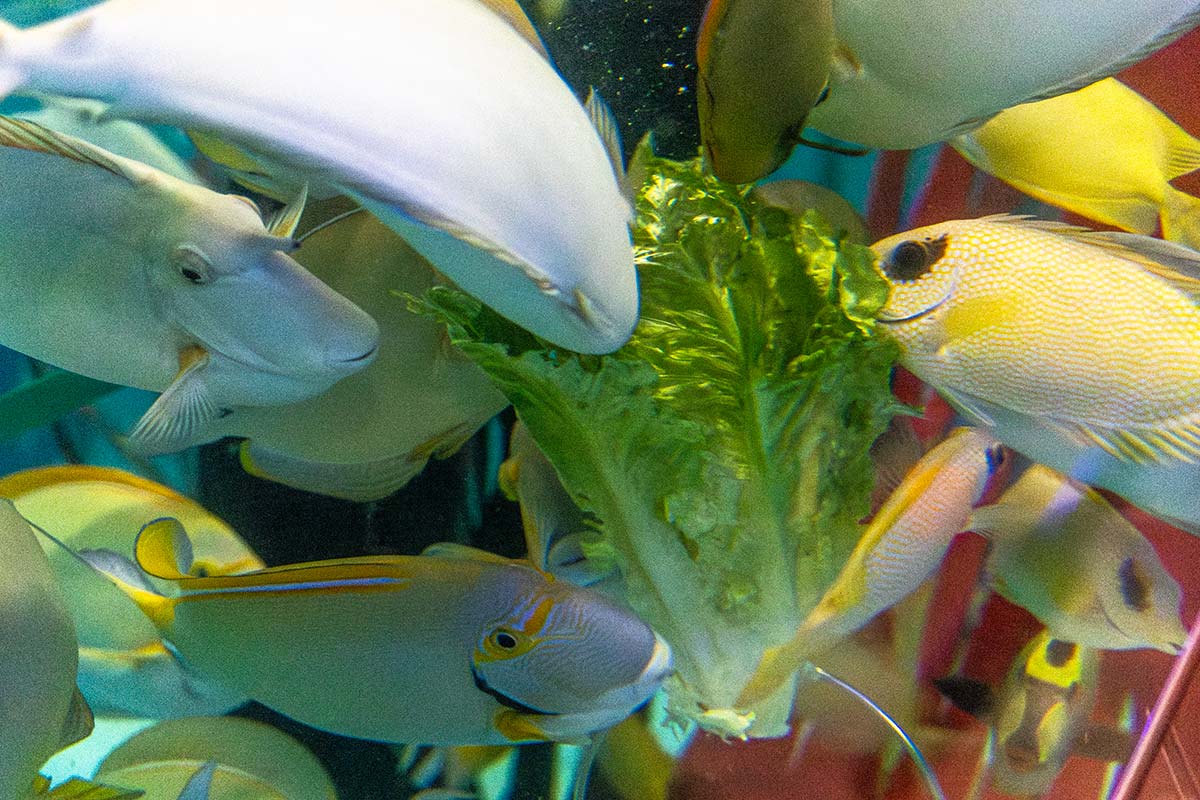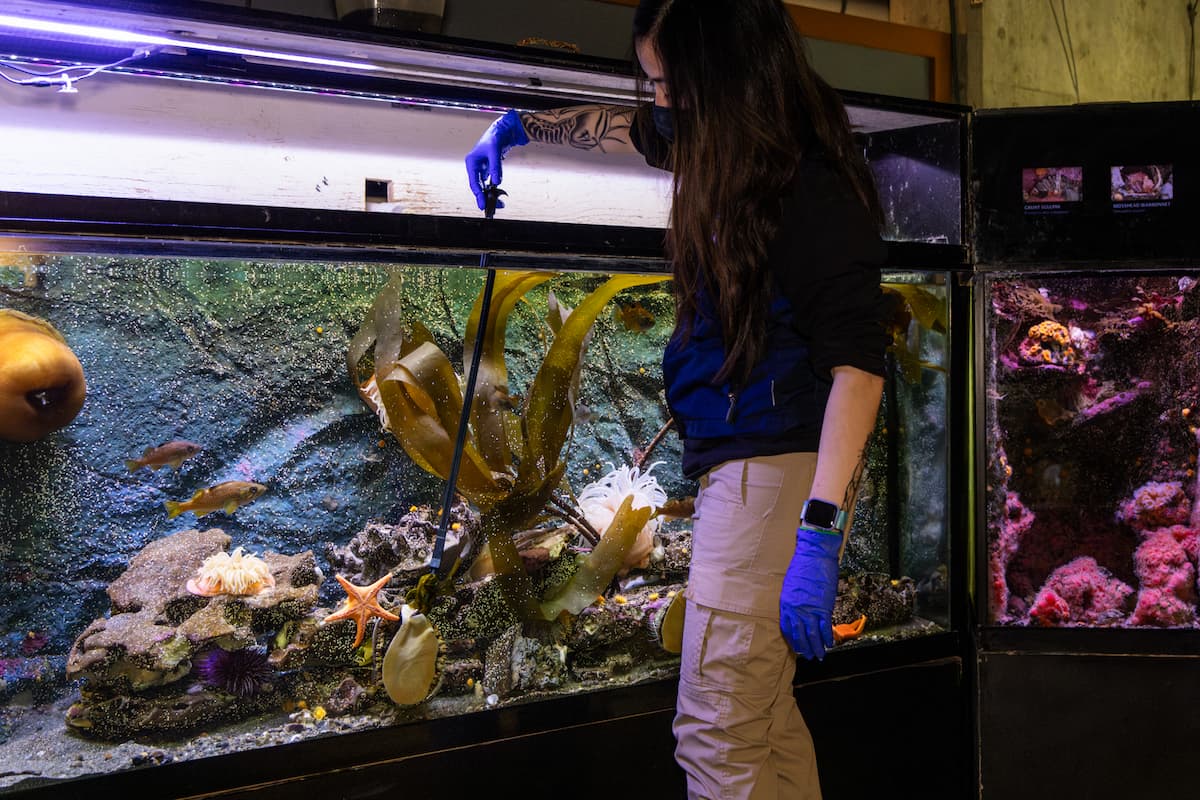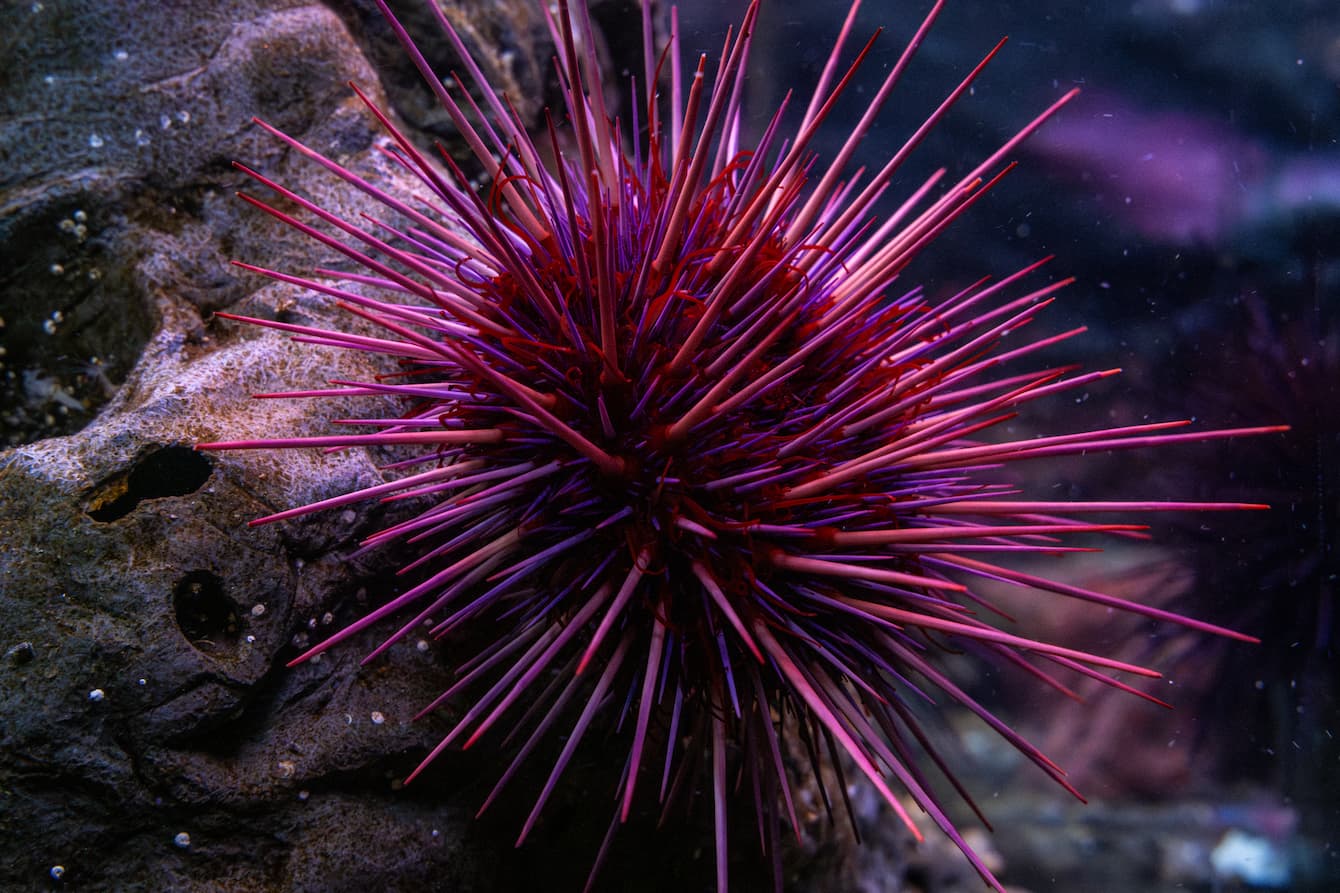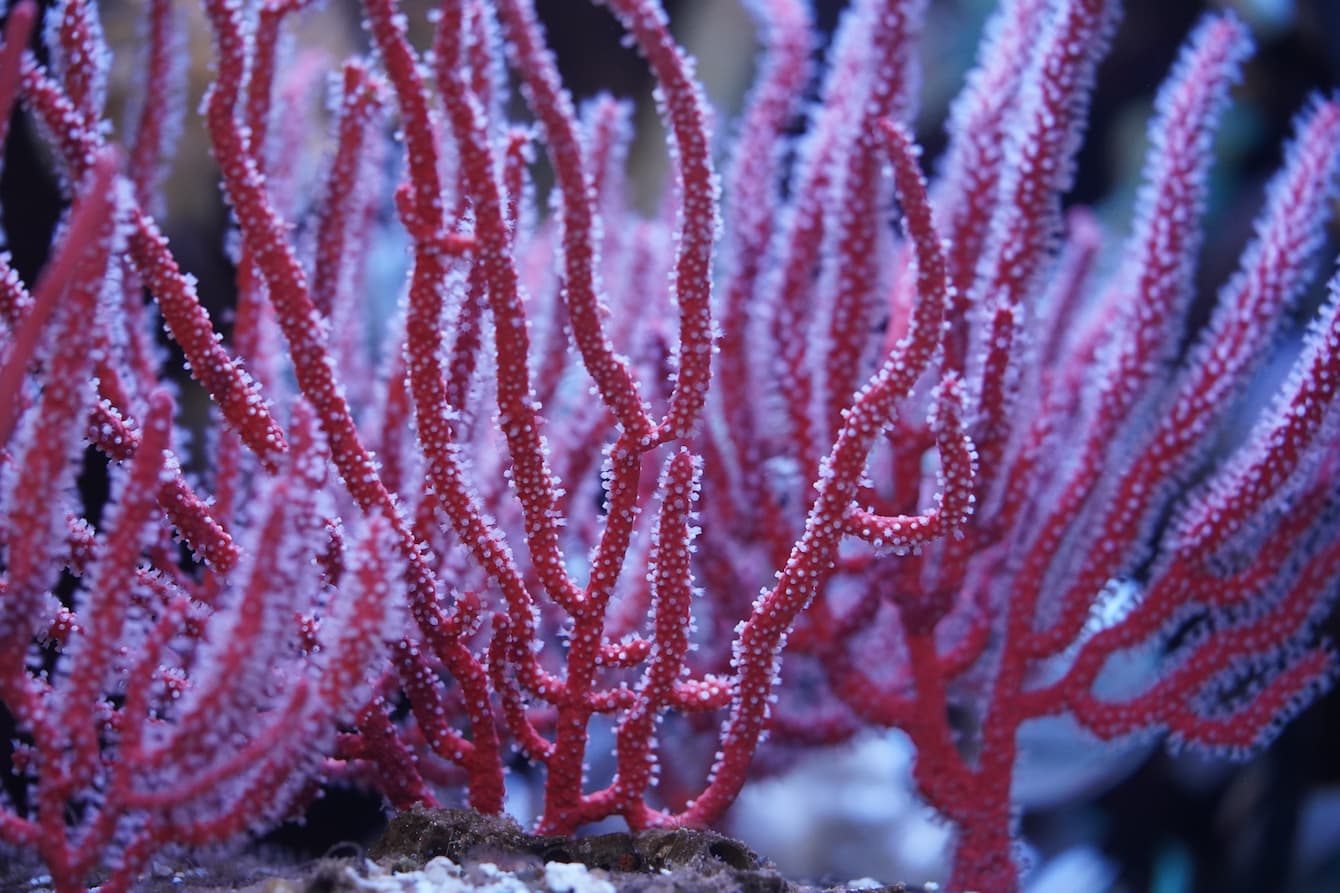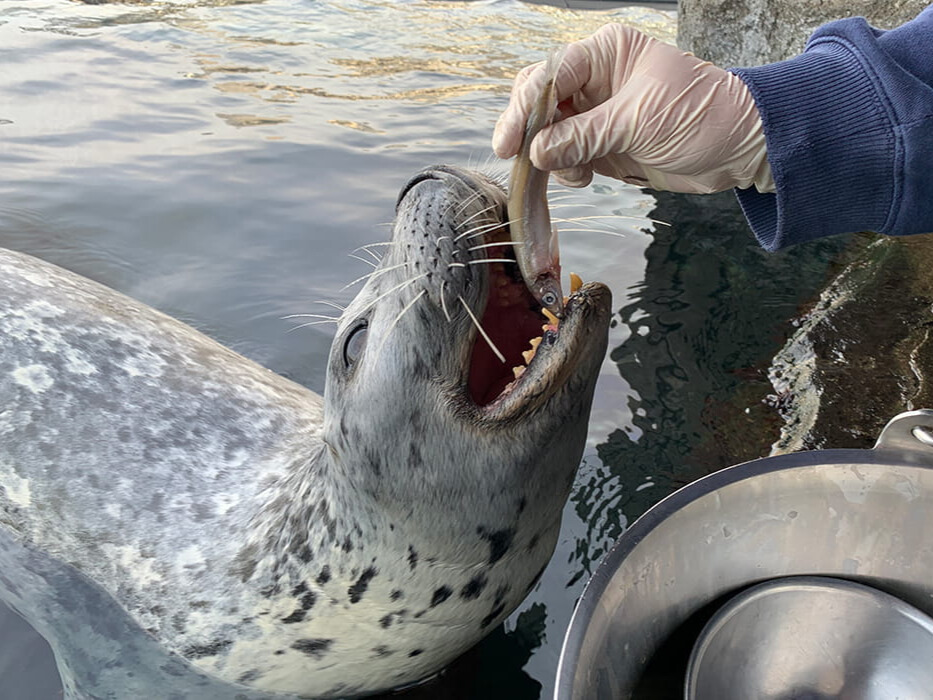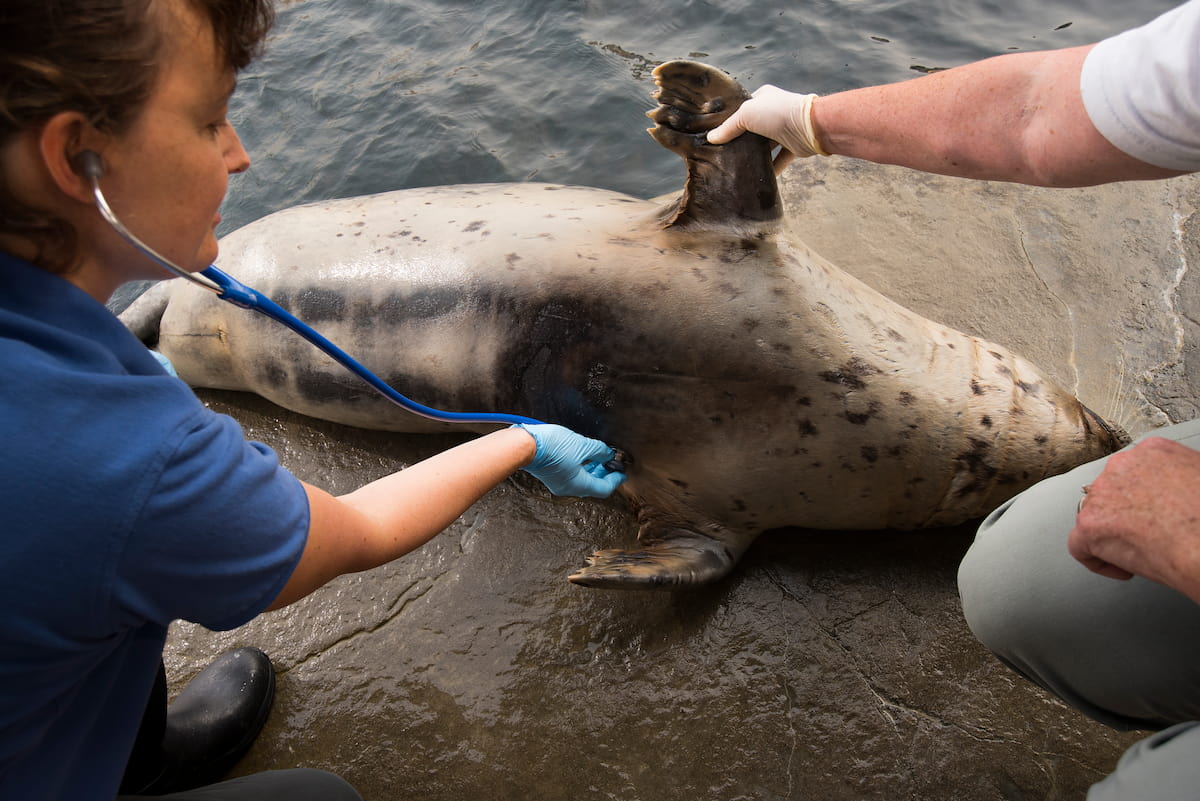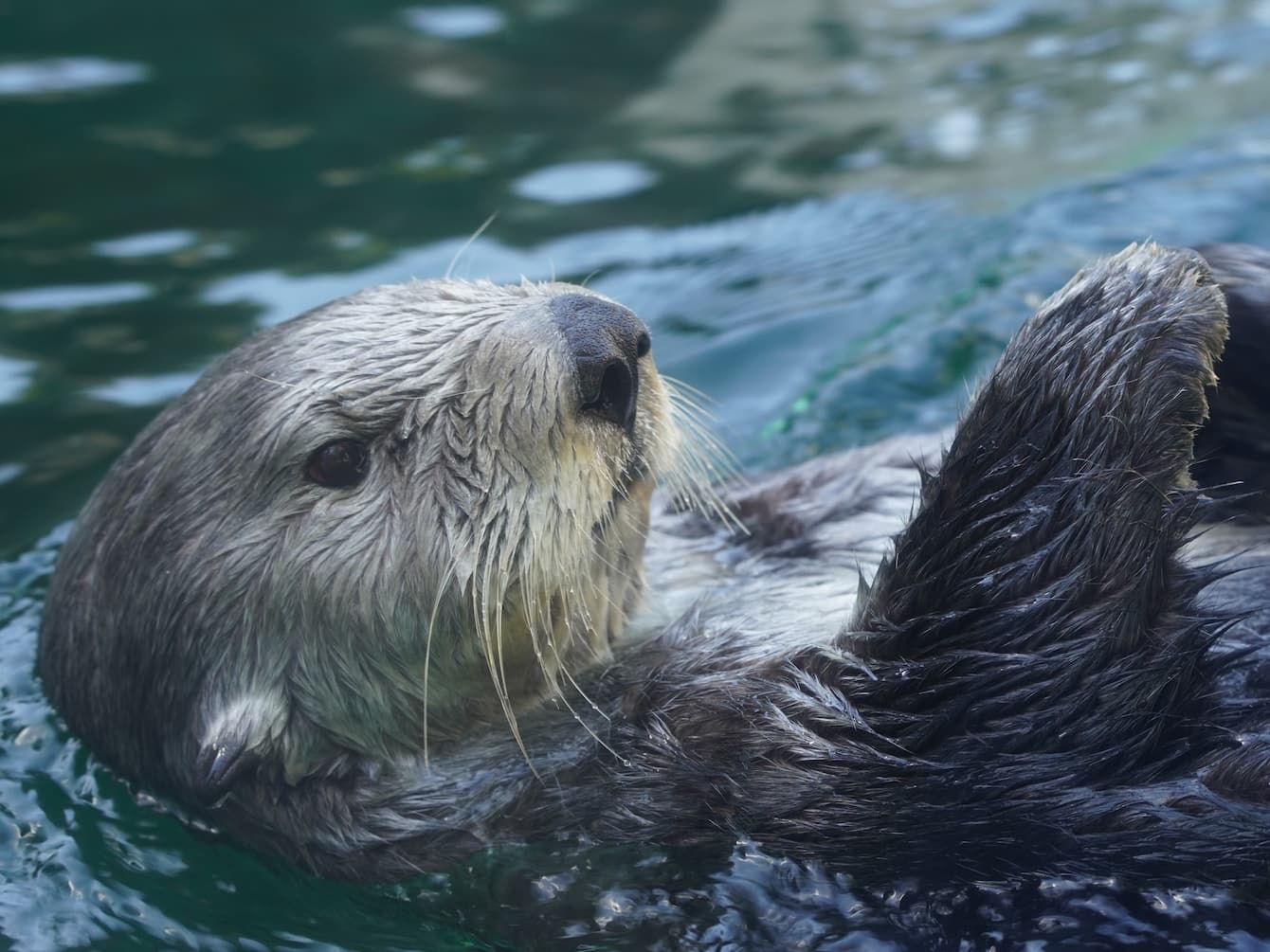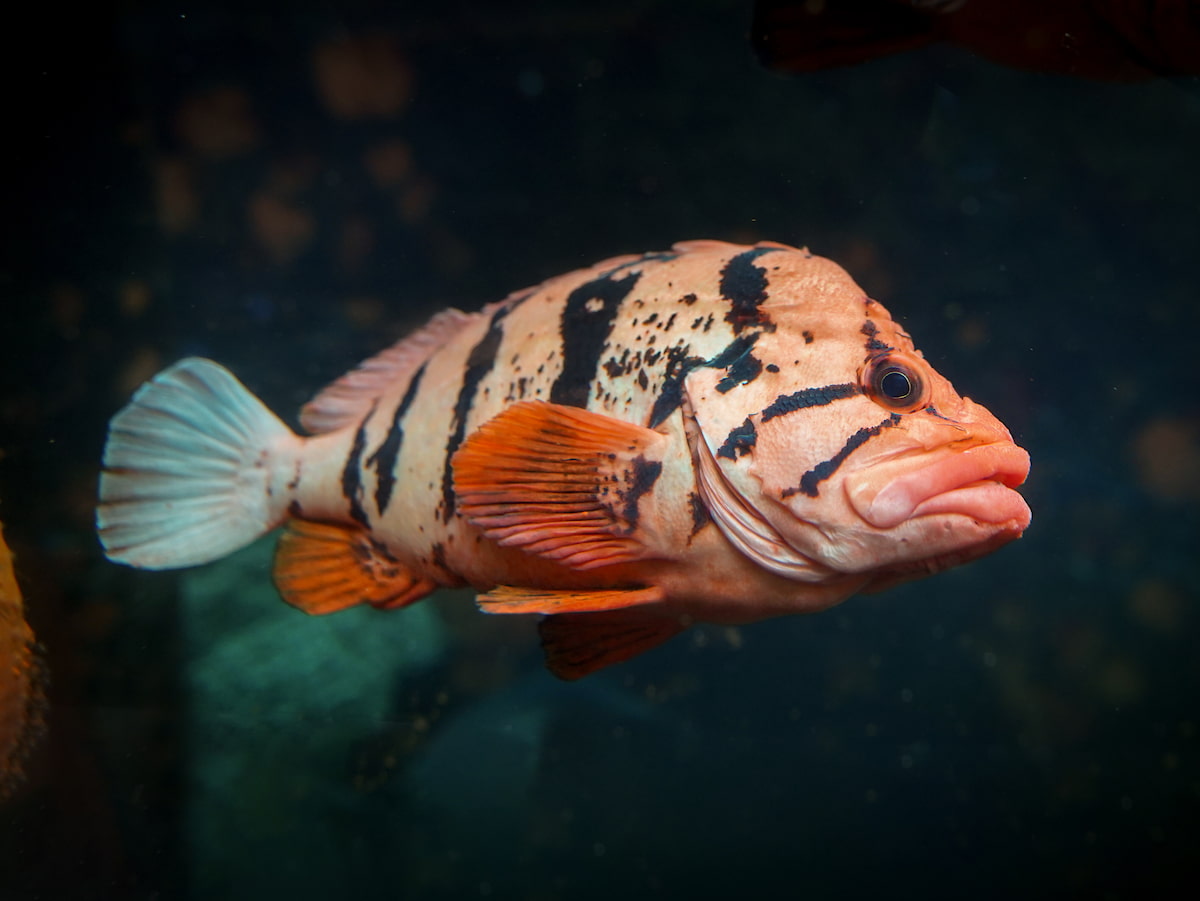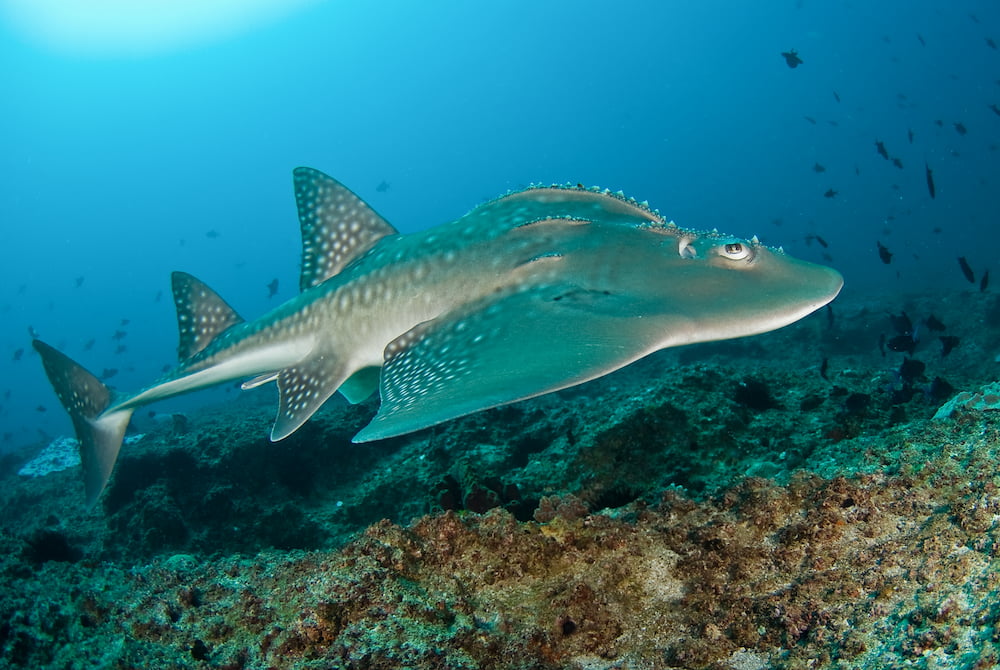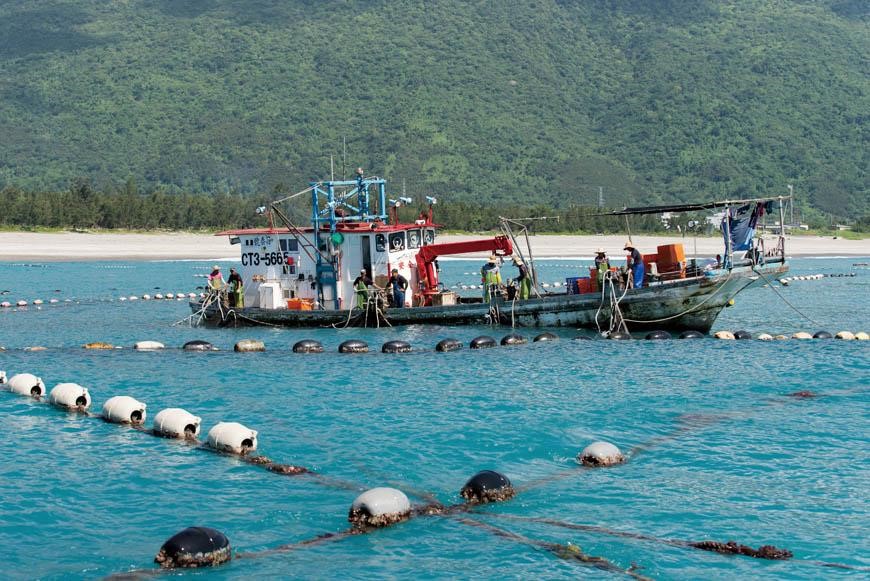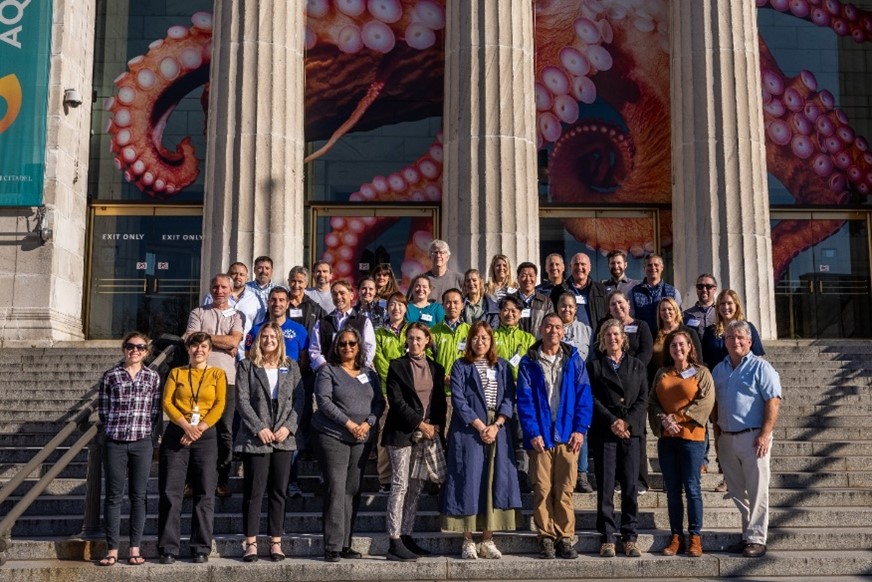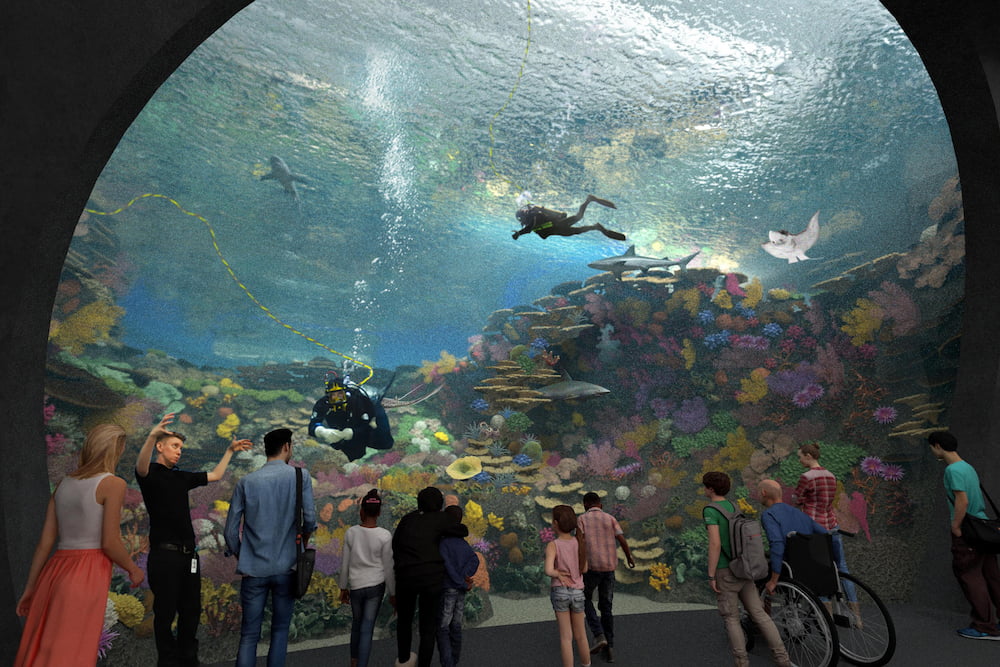Dive down memory lane with us to celebrate Barney’s 40th birthday!
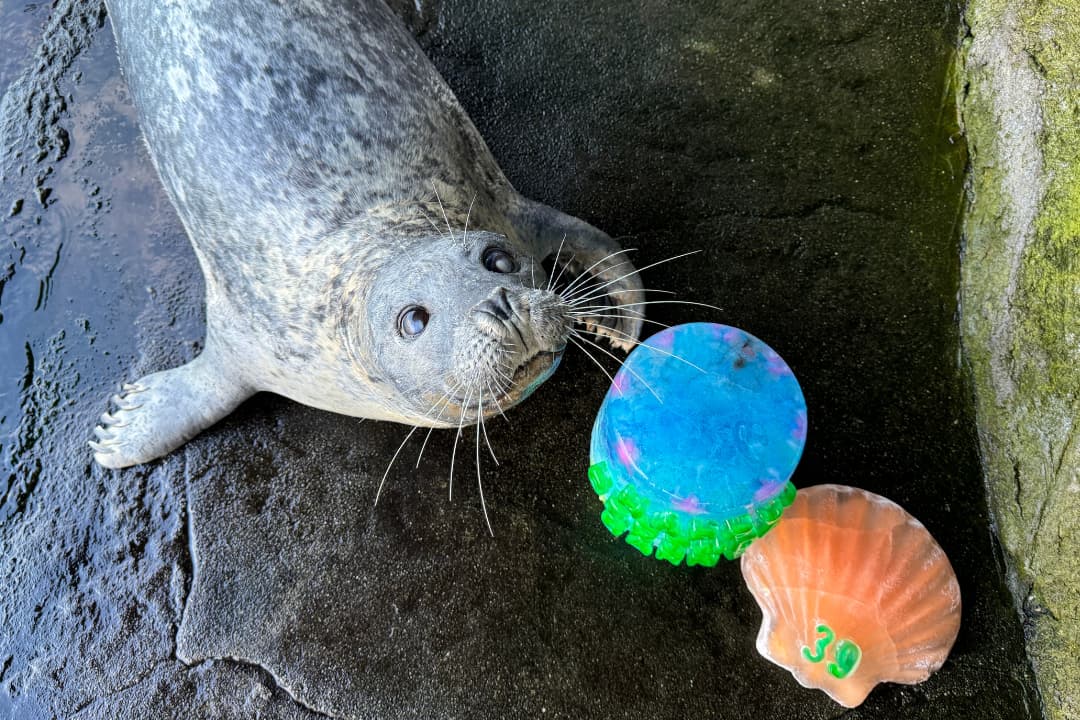
Editor’s note: This story was originally published in September 2024 for Barney’s 39th birthday, as he approached the human equivalent of 100 years old. Barney passed in March 2025. To celebrate his life and legacy, we’re republishing this story on what would have been his 40th birthday.
Barney the harbor seal was born right here at the Seattle Aquarium on September 14, 1985! And he’s been stealing the hearts of staff and guests alike ever since, while inspiring millions to help protect his beloved and charismatic species.
In his golden years, Barney enjoyed the simple things in life, like a nice nap in the sunshine, getting his teeth brushed daily and eating some of his favorite snacks, including all things fish. He was also a fan of his birthday celebrations, as you’ll see in the photos below. Dive down memory lane to revisit some of those celebrations with us as we commemorate Barney’s extraordinary life!
Centennial celebration—happy 39th, Barney!
According to the Association of Zoos & Aquariums (AZA), of which we’re proud to be an accredited member, the median life expectancy for harbor seals in zoos and aquariums is about 25 years. At 39, Barney has lived well beyond that. In fact, his biological age is about the equivalent of a 100-year-old human!
Give him—and his caretakers—some love on our Facebook or Instagram to mark the occasion.
38 years young!
Barney’s 38th birthday bash was complete with a “cake” made from ice and 38 frozen fish!
37 looks good on you
We welcomed harbor seal Casey earlier in 2022, and all three “roomies”—Barney, Hogan and Casey— dug into a delicious, fish-filled ice treat together.
Having his cake and eating it too
Barney rang in his 36th birthday by tucking into a towering ice treat “cake.”
Pandemic party
While we couldn’t invite the public to celebrate with Barney because of our temporary, pandemic-related closure, our incredible animal care team made sure he felt the birthday love.
Just another enriching birthday
Animals at the Aquarium receive enrichment every day (read more about it on our webpage). Special occasions, like Barney’s 30th, give our animal care team a fun reason to get creative with it.
28 and looking great!
In 2013, Barney celebrated his birthday with cake in his habitat’s new haul-out space*! Generous support from people like you allowed us to renovate and expand the harbor seal habitat back then.
*What’s that? Space that the seals use to go onto dry land to nap, groom, cooperatively participate in their own health care and, in Barney’s case, eat a birthday treat.
Your gift today will make a difference too: Please consider a donation of $19.85, $39 or any amount on behalf of Barney’s birthday!
Awww, you shouldn’t have
Shown here in the habitat’s previous haul-out space, Barney looks ready to devour the ice treat that our animal care team prepared for him.
Stealth celebration
What’s better on your 26th birthday than a delicious ice treat, just waiting for you to notice it as you casually swim by?
Blow out the candles!
Here’s a throwback to Barney’s 25th! Our animal care team went all out with an ice treat complete with “candles” for him to crunch and munch.
Baby Barney’s birth day
Photo: Seattle Post-Intelligencer
How’s this for a sweet, vintage photo of newborn Barney alongside his mom, Clyde? For perspective on how long ago that was in terms of other Pacific Northwest icons, Barney was born the same year that downtown Seattle’s tallest skyscraper, Columbia Center, opened; two years before the band Nirvana was formed; and 15 years before the Kingdome was demolished. Just our humble opinion, of course, but we think he’s the best and most charming icon of the bunch. Happy, happy 39th to beloved Barney!
